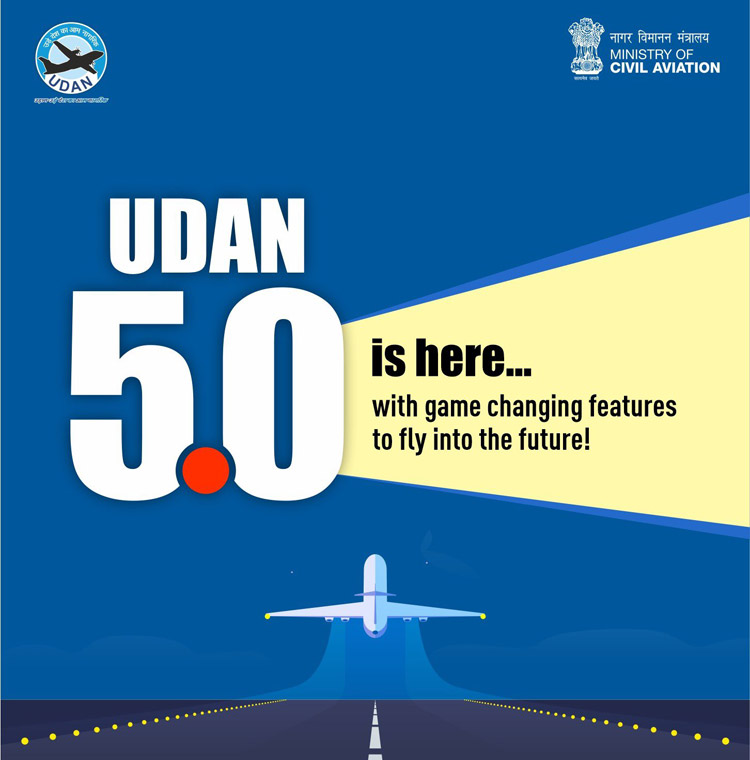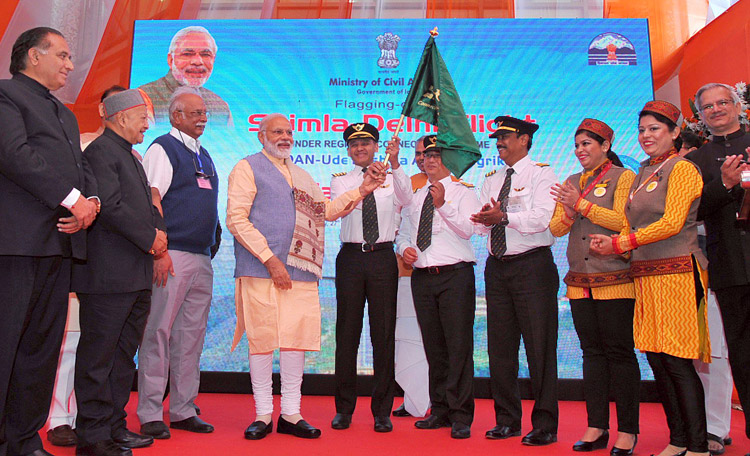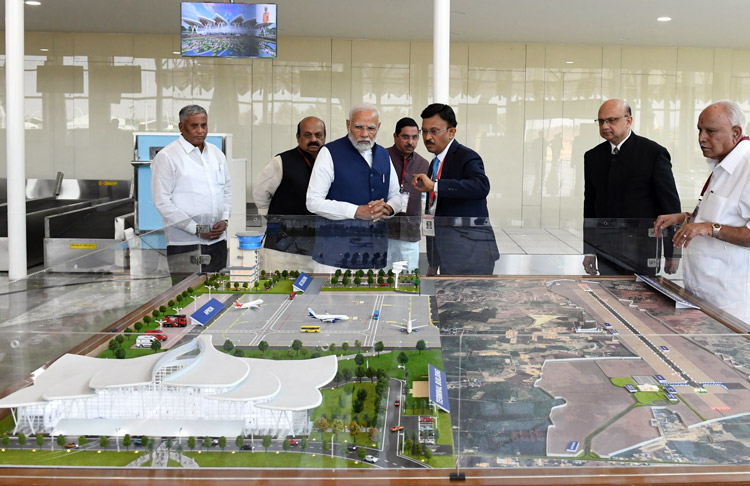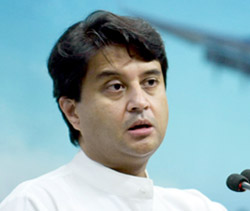INDIAN ARMED FORCES CHIEFS ON OUR RELENTLESS AND FOCUSED PUBLISHING EFFORTS

The insightful articles, inspiring narrations and analytical perspectives presented by the Editorial Team, establish an alluring connect with the reader. My compliments and best wishes to SP Guide Publications.

"Over the past 60 years, the growth of SP Guide Publications has mirrored the rising stature of Indian Navy. Its well-researched and informative magazines on Defence and Aerospace sector have served to shape an educated opinion of our military personnel, policy makers and the public alike. I wish SP's Publication team continued success, fair winds and following seas in all future endeavour!"

Since, its inception in 1964, SP Guide Publications has consistently demonstrated commitment to high-quality journalism in the aerospace and defence sectors, earning a well-deserved reputation as Asia's largest media house in this domain. I wish SP Guide Publications continued success in its pursuit of excellence.
- A leap in Indian aviation: Prime Minister Modi inaugurates Safran's Global MRO Hub in Hyderabad, Calls It a Milestone
- All about HAMMER Smart Precision Guided Weapon in India — “BEL-Safran Collaboration”
- India, Germany deepen defence ties as High Defence Committee charts ambitious plan
- True strategic autonomy will come only when our code is as indigenous as our hardware: Rajnath Singh
- EXCLUSIVE: Manish Kumar Jha speaks with Air Marshal Ashutosh Dixit, Chief of Integrated Defence Staff (CISC) at Headquarters, Integrated Defence Staff (IDS)
- Experts Speak: G20 Summit: A Sign of Global Fracture
UDAN 5.0 launched!
- Ministry of Civil Aviation launched the 5th round of the Regional Connectivity Scheme (RCS) - Ude Desh Ka Aam Nagrik (UDAN).
- It aims to further enhance connectivity to remote & regional areas of the country.
- This round of UDAN focuses on Category-2 (20-80 seats) & Category-3 (>80 seats)

Following the four successful rounds of bidding, the Ministry of Civil Aviation has launched the 5th round UDAN scheme on April 21 by releasing a bid document. The Ministry has started the process of inviting bids from airlines for various routes under the fifth round of bidding of the Regional Connectivity Scheme (RCS) - Ude Desh Ka Aam Nagrik (UDAN) to further enhance the connectivity to remote and regional areas of the country and achieve last mile connectivity.
Funding has been made available for Category 2 and Category 3 aircraft in the scheme's fifth phase, known as UDAN 5.0. According to the official statement, only aircraft operations of Category 2 (20-80 seats) and Category 3 (>80 seats) will fall in this round with no restriction on the distance between the origin and destination, with stage length cap of 600 km waived.
The earlier stage length cap of 600 km is waived off and there is no restriction on the distance between the origin and destination of the flight.
UDAN 5.0 will cap the Viability Gap Funding (VGF) at the same length for both Priority and Non-Priority areas. Previously, the VGF was capped at 500 km. Under the UDAN scheme, the government compensates airlines for losses incurred due to low fares through viability gap funding. The Airports Authority of India has waived airport fees, while state governments are providing free security, electricity, and firefighting services to support the scheme.
To fund the UDAN scheme, a levy of 50 on flight tickets has been imposed on major routes. This levy accounts for 80 per cent of the viability gap funding provided to airlines, while the remaining 20 per cent is provided by state governments.

To prevent the exploitation of monopolies on specific routes, exclusivity will be withdrawn if the average quarterly Passenger Load Factor (PLF) exceeds 75 per cent for four consecutive quarters. Airlines are required to begin operations within four months of being awarded the route, a reduction from the previous six-month deadline.
"UDAN has proved to be a lifeblood of many regions which are now well connected with places across the country. This new & stronger version of the scheme will raise the momentum, connecting new routes, and bring us closer to the target of operationalising 1000 routes & 50 additional airports, heliports, and water aerodromes in the near future," said the Minister of Civil Aviation Jyotiraditya Scindia.
Under UDAN 5.0, the VGF to be provided will be capped at 600 km stage length for both Priority and Non-Priority areas which was earlier capped at 500 km.
Other key Features of UDAN 5.0 are as follows:
- No predetermined routes would be offered. Only Network and Individual Route Proposal proposed by airlines will be considered.
- The airlines would be required to submit an action/business plan after 2 months from the issuance of LoA wherein they submit their aircraft acquisition plan/availability of aircraft, crew, slots, etc. at the time of the Technical Proposal.
- The same route will not be awarded to a single airline more than once, whether in different networks or in the same network.
- 25 per cent of the Performance Guarantee to be encashed for each month of delay up to 4 months, to further incentivise quick operationalisation.
- A list of airports that are ready for operation or would soon be ready for operations has been included in the scheme to facilitate quicker operationalisation of routes under the Scheme.
- Novation process for routes from one operator to another is simplified and incentivised.
UDAN Scheme has benefitted a diverse set of stakeholders. Passengers have got the benefits of air connectivity, airlines have received concessions for operating regional routes, unserved regions have received the direct and indirect benefits of air connectivity for their economic development, the official statement read. It is another step towards the Prime Minister's vision of the common man traveling by air at affordable and subsidised airfares.

The fourth round of the regional connectivity scheme, known as UDAN 4.0, awarded 78 routes in August 2020, including around 40 from the Northeast region. The Airports Authority of India listed 50 airports (including heliports) and 268 routes currently in operation under the ambitious scheme. Since the launch of the fourth phase, 766 routes have been sanctioned under the scheme, with 29 served, eight unserved (including two heliports and one water aerodrome), and two underserved airports included in the list of approved routes.

"This new & stronger version of the scheme will raise the momentum, connecting new routes, and bring us closer to the target of operationalising 1000 routes & 50 additional airports, heliports, and water aerodromes in the near future," said Civil Aviation Minister, Jyotiraditya Scindia.
The UDAN scheme aims to connect small and medium-sized cities with major cities through air services. Airlines compete for air routes and participate in bids, with the contract awarded to the airline that bids for the lowest subsidy. The goal is to put small-town India on the aviation map by encouraging airlines to fly on regional routes and making air travel affordable for the common man.
The primary objective of the RCS is to reduce the cost of regional air connections and promote affordable regional air connectivity by providing airline carriers with concessions from the Central and State Governments, as well as minimising the cost of regional airline operations. The UDAN Scheme is a crucial component of India's National Civil Aviation Policy, released for the first time in 2016. In April 2017, Prime Minister Narendra Modi launched the first flight from Shimla to Delhi under the RCS scheme.
The government has been pushing the UDAN scheme that has further given a boost to the civil aviation industry in India, further making the country one of the fastest growing aviation markets in the world.





